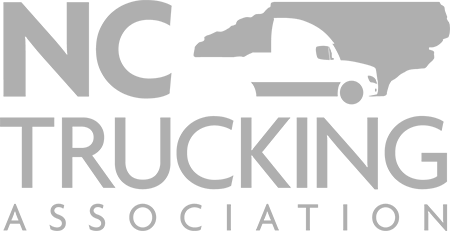Why the US-Mexico Border Trucking Market is Expanding
The landscape of North American logistics is currently undergoing a significant transformation, with the corridor between the United States and Mexico emerging as a particularly dynamic area. While domestic trucking markets in the US might experience fluctuations, the border region tells a different story. Here, freight volumes are consistently robust, propelled by specific economic forces. Understanding the primary US Mexico trucking market demand drivers is crucial for businesses involved in cross-border trade. These drivers are creating a stable, high-demand environment for transportation services moving goods northbound.
This expansion isn’t a sudden blip but rather a trend gaining momentum over recent years. It reflects deeper shifts in global supply chains and production strategies. The proximity of Mexico to the vast US consumer market, coupled with evolving trade policies and labor costs, makes it an attractive manufacturing hub. As production increases south of the border, the need to transport finished goods, components, and raw materials intensifies, directly impacting the trucking sector.
Furthermore, the infrastructure supporting this trade is constantly evolving. Border crossings, particularly major gateways like Laredo, Texas, are seeing increased traffic and requiring ongoing investment and optimization to handle the rising volume efficiently. The complexities of customs procedures, security protocols, and differing regulations between the two countries add layers of challenge and opportunity for carriers operating in this specialized market.
The resilience of the US-Mexico trucking market, even when other freight sectors face headwinds, highlights its unique position in global trade. It’s a corridor driven by consistent, fundamental demand, making it a key focus area for logistics providers looking for stable growth.
Manufacturing and Produce Fueling Northbound Freight
One of the most significant forces driving the growth in the US-Mexico trucking market is the substantial volume of manufactured goods and fresh produce moving north. Mexico has become a major manufacturing center for a wide array of products destined for US consumers and industries. This includes everything from automobiles and electronics to appliances and textiles.
The establishment and expansion of manufacturing facilities, often referred to as maquiladoras, near the border and deeper within Mexico’s interior, generate a steady stream of outbound freight. These facilities rely heavily on efficient truck transportation to move finished goods to distribution centers and consumers across the United States. The integrated nature of North American manufacturing, where components might cross the border multiple times during the production process, further boosts trucking demand.
Beyond manufactured goods, Mexico is also a vital source of agricultural products for the US market, especially during certain seasons. Fresh fruits, vegetables, and other food items require timely and temperature-controlled transportation. This perishable freight adds another critical layer to the US-Mexico trucking market, demanding specialized equipment and expertise from carriers.
The sheer volume and diversity of these goods mean that trucks crossing the border are consistently full, particularly on the northbound lanes. This inherent demand contributes significantly to the stability and relative strength of cross-border freight rates, setting them apart from the more volatile domestic spot markets.
Consider the types of commodities frequently transported:
- Automotive parts and finished vehicles
- Electronics and components
- Appliances and household goods
- Textiles and apparel
- Fresh produce (avocados, tomatoes, berries, etc.)
- Processed foods and beverages
- Machinery and industrial equipment
Each of these categories represents a massive sector contributing to the overall freight ecosystem. The movement of these goods is foundational to understanding the underlying dynamics of the US Mexico trucking market demand drivers.
The efficiency and reliability of the trucking sector are paramount for industries relying on this cross-border flow. Delays at the border, equipment shortages, or disruptions can have ripple effects throughout supply chains. This dependency underscores the critical role that robust and capable trucking operations play in facilitating North American trade.
The Strategic Impact of Nearshoring on Border Logistics
Nearshoring has emerged as a transformative trend reshaping global supply chains, and its impact is perhaps most profoundly felt in the US-Mexico corridor. Faced with the challenges of long transit times, rising costs, and geopolitical uncertainties associated with manufacturing in distant regions, many companies are opting to relocate production facilities closer to their primary markets. Mexico, sharing a long land border with the United States, is a prime beneficiary of this strategy.
This strategic shift directly translates into increased demand for cross-border logistics services, especially trucking. When manufacturing moves from Asia to Mexico, the vast majority of finished goods bound for the US will move by truck. This shortens supply lines significantly compared to ocean freight, offering greater speed, flexibility, and responsiveness to market changes.
The advantages driving nearshoring to Mexico include:
- Geographic Proximity: Reducing transit times and costs compared to overseas shipping.
- Lower Labor Costs: Offering a competitive alternative to US labor expenses.
- Trade Agreements: The USMCA (United States-Mexico-Canada Agreement) provides a framework for tariff-free trade on many goods.
- Supply Chain Resilience: Reducing reliance on distant and potentially volatile supply routes.
- Cultural and Time Zone Alignment: Facilitating easier communication and collaboration.
As more companies establish or expand operations in Mexico, the need for reliable and efficient transportation grows exponentially. This includes not only the movement of finished goods northbound but also the transport of raw materials, components, and machinery southbound.
Nearshoring is fundamentally altering freight patterns. It is shifting volume from traditionally busy ocean ports to land border crossings. This requires significant investment in border infrastructure, including customs processing capabilities, road networks, and logistics facilities like warehouses and cross-docks.
The trend is not limited to large multinational corporations. Small and medium-sized businesses are also exploring opportunities to leverage Mexico’s manufacturing capabilities through nearshoring. This broad adoption further solidifies its role as a major US Mexico trucking market demand drivers.
Carriers with established expertise and infrastructure in the US-Mexico corridor are well-positioned to capitalize on this trend. Navigating the complexities of cross-border operations, including customs brokerage, security compliance, and carrier partnerships in Mexico, requires specialized knowledge.
For businesses considering nearshoring, or those already engaged in cross-border trade, understanding the logistical implications is paramount. The success of a nearshoring strategy often hinges on the efficiency and reliability of the transportation link between Mexico and the US market.
Exploring the Key US Mexico Trucking Market Demand Drivers
To fully grasp why the US-Mexico trucking market is experiencing such robust growth, it’s essential to look at the specific factors acting as the primary US Mexico trucking market demand drivers. These are the underlying economic and strategic forces that distinguish this corridor from other transportation markets.
Firstly, as discussed, nearshoring is perhaps the most impactful recent driver. The strategic decision by companies to move manufacturing operations closer to the US market reduces reliance on lengthy and complex trans-Pacific shipping lanes. This proximity directly favors truck transportation for moving goods efficiently across the land border. The manufacturing sectors particularly affected include automotive, electronics, aerospace, and medical devices.
Secondly, strong consumer demand in the United States for goods manufactured or assembled in Mexico continues to be a fundamental driver. Even when overall US domestic freight demand might soften, the specific demand for Mexican-produced goods remains significant, ensuring a baseline level of cross-border traffic.
Thirdly, the stability of trade relations under the USMCA provides a predictable framework for businesses. While trade policies can always evolve, the existence of a major trade agreement encourages long-term investment in cross-border supply chains, underpinning sustained demand for transportation.
Fourthly, compared to the volatility sometimes seen in the US domestic spot market, cross-border rates, particularly on the Mexican side and for northbound moves, have shown greater stability. This relative predictability in transportation costs is attractive to shippers and contributes to consistent freight flow.
Fifthly, specialized freight requirements, such as temperature-controlled transportation for perishable goods or specialized equipment for heavy machinery, create specific niches within the market that require dedicated capacity and expertise. Mexico’s role as a major exporter of agricultural products, especially through Texas border crossings, contributes significantly to this demand.
Sixthly, demographic and economic growth in both countries fuels bilateral trade. As the populations and economies of the US and Mexico grow, so too does the exchange of goods, from raw materials to finished products, creating ongoing demand for transportation services.
Finally, investment in infrastructure, though often needing further development, is increasing at key border points and along the major trucking corridors. Improved bridges, expanded customs facilities, and better road networks are essential to handling the rising volume and facilitating trade, further supporting the growth of trucking.
These factors collectively create a compelling case for the strength and resilience of the US-Mexico trucking market. Understanding these drivers is not just academic; it’s vital for any business operating in or considering this critical North American trade lane.
| Key Demand Driver | Impact on Trucking |
|---|---|
| Nearshoring from Asia | Shifts freight volume from ocean to truck, increases northbound FTL demand. |
| US Consumer Demand for Mexican Goods | Ensures consistent baseline freight volume for a wide range of products. |
| USMCA Trade Agreement | Provides trade predictability, encouraging long-term supply chain investment. |
| Stable Cross-Border Rates | Attractive to shippers, promotes consistent freight flow compared to volatile markets. |
| Growth in Specialized Freight (e.g., Produce) | Drives demand for specific equipment (reefers) and expertise. |
| Economic & Demographic Growth | Increases overall bilateral trade volume. |
| Infrastructure Investment | Facilitates smoother border crossings and faster transit times. |
These interrelated factors underscore the unique position of the US-Mexico trucking market. While domestic trucking can be subject to fluctuations driven by immediate economic cycles, the cross-border market is buoyed by these more fundamental and strategic trends.
Understanding Trends in Cross-Border Volume and Rates
Analyzing the trends in cross-border freight volume and rates provides concrete evidence of the forces at play, particularly the impact of the US Mexico trucking market demand drivers. Data from key border crossings consistently shows year-over-year increases in the number of trucks moving goods between the two countries, even during periods when overall US freight volumes might be stagnant or declining.
For instance, major gateways like Laredo, Texas, which is the busiest inland port on the US-Mexico border, frequently report significant increases in truck traffic. This surge is a direct consequence of the manufacturing output and nearshoring activities concentrated in northern and central Mexico, with Laredo serving as a primary conduit for these goods entering the US market.
Volume trends are also influenced by the seasonality of agricultural products. Peak harvest seasons for specific crops in Mexico can lead to temporary spikes in demand for refrigerated trucks heading north. Understanding these seasonal patterns is vital for carriers and shippers to plan capacity effectively.
On the rates front, the US-Mexico cross-border market, particularly the northbound leg from Mexico into the US, has demonstrated relative stability and strength compared to the broader US domestic spot market. While domestic spot rates can fluctuate widely based on supply and demand imbalances, the consistent demand driven by manufacturing and nearshoring in Mexico helps to keep cross-border rates more resilient.
Factors contributing to rate stability include:
- Consistent Demand: High volume of manufactured goods provides a reliable base load.
- Specialized Operations: Cross-border trucking involves additional complexities (customs, drayage, specific permits) that command a premium.
- Balanced Freight Flows (increasingly): While northbound is traditionally dominant, increased manufacturing in Mexico also generates southbound traffic (raw materials, components, machinery), helping carriers balance lanes.
- Fewer Carriers (relative to domestic): The specialized nature of cross-border hauling means fewer carriers are fully equipped and authorized to operate in this market compared to the vast US domestic market, limiting excessive competition that can depress rates.
However, challenges exist. Border delays due to increased traffic, heightened security measures, or infrastructure limitations can impact transit times and add costs. Fluctuations in currency exchange rates between the US dollar and the Mexican peso can also influence costs and pricing for cross-border services.
Despite these challenges, the overall trend indicates a market experiencing sustained growth in volume and relatively stable rates, a clear reflection of the powerful US Mexico trucking market demand drivers at work.
Monitoring these trends is crucial for businesses. Access to real-time data on border wait times, freight volumes at key crossings, and prevailing rate benchmarks allows shippers and carriers to make informed decisions, optimize routes, and manage costs effectively. Leveraging technology for visibility, such as API integrations for GPS tracking, is increasingly important in this dynamic environment.
Capitalizing on Growth in the US-Mexico Trucking Corridor
The sustained growth in the US-Mexico trucking corridor, fueled by the powerful US Mexico trucking market demand drivers, presents significant opportunities for businesses engaged in cross-border trade. Capitalizing on this growth requires a strategic approach, focusing on reliability, compliance, and operational efficiency.
For shippers, navigating the complexities of US-Mexico cross-border logistics necessitates partnering with carriers and logistics providers who possess specialized expertise. This involves more than just finding a truck; it requires understanding customs procedures, managing drayage across the border, ensuring cargo security (cargo theft is a concern), and having reliable partners on both sides of the border.
Key strategies for shippers include:
- Choosing Experienced Partners: Work with carriers and brokers who have a proven track record in cross-border operations, particularly at the specific gateways you use.
- Ensuring Compliance: Verify that your logistics partners adhere to all US and Mexican regulations, including customs, safety, and security programs like CTPAT.
- Leveraging Technology: Utilize providers offering real-time visibility into your shipments while they cross the border and move through Mexico and the US. API integration for real-time freight visibility can significantly improve supply chain management.
- Considering Service Models: Explore options like door-to-door service through a single provider, or leveraging specialized services like cross-border LTL (Mexico cross-border LTL capacity solutions) for smaller shipments.
For trucking companies and logistics providers, success in this corridor hinges on building robust networks and capabilities. This includes having a modern and well-maintained fleet, recruiting and retaining experienced drivers comfortable with cross-border operations, and establishing strong relationships with customs brokers and Mexican carrier partners.
An asset-based provider with its own equipment and drivers, coupled with a strong brokerage capability (key benefits of the trucking asset brokerage hybrid model), can offer significant advantages in this market. Owning assets provides greater control over capacity and service quality, while brokerage allows for flexibility and coverage in lanes where owned assets might not be positioned.
Investing in technology for tracking, communication, and data analysis is also paramount. Providing shippers with accurate, up-to-date information about their freight is a key differentiator. Furthermore, focusing on safety and compliance not only ensures smooth border crossings but also builds trust with shippers of high-value goods.
The US-Mexico trucking market is not without its challenges, including infrastructure bottlenecks, security concerns, and regulatory hurdles. However, for those equipped with the right knowledge, partnerships, and operational strategies, the opportunities presented by the persistent US Mexico trucking market demand drivers make this corridor one of the most promising in North American logistics.
As nearshoring continues to evolve and trade volumes grow, the importance of efficient, reliable, and secure cross-border trucking services will only increase. Businesses that proactively address the unique demands of this market will be best positioned to thrive.
Engaging with industry associations and staying informed about policy changes and infrastructure developments at the border are also crucial steps for capitalizing on this growth. The dynamic nature of cross-border trade requires continuous learning and adaptation.
Ultimately, success in the US-Mexico trucking market is about more than just moving freight; it’s about building resilient supply chains that can withstand disruptions and consistently deliver goods across international borders efficiently and reliably. This requires a deep understanding of the market’s unique drivers and challenges, as well as a commitment to operational excellence and strategic partnerships.
One example of a credible source for trade data is the U.S. Census Bureau’s data on trade with Mexico. Another is the Bureau of Transportation Statistics (BTS) border crossing data, which provides valuable insights into traffic volumes at various ports of entry.
Have questions? Contact us here.














